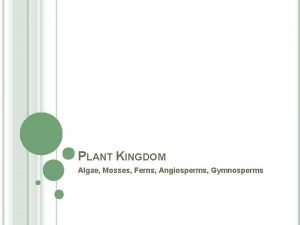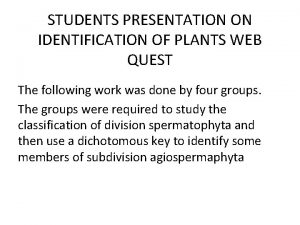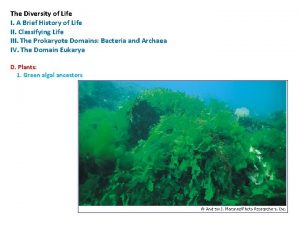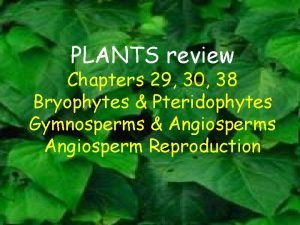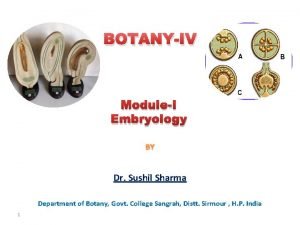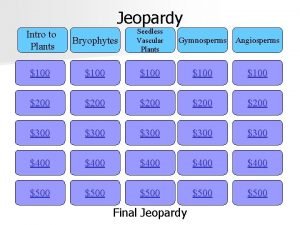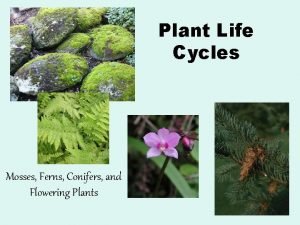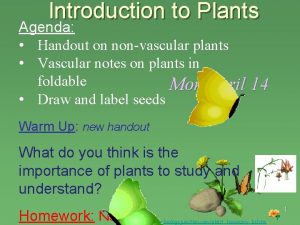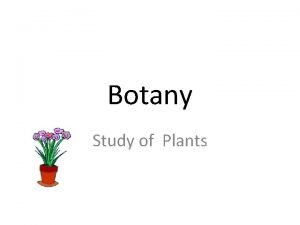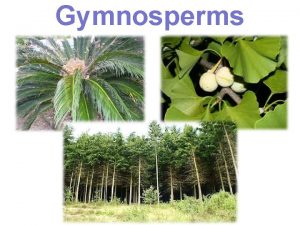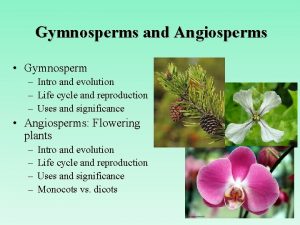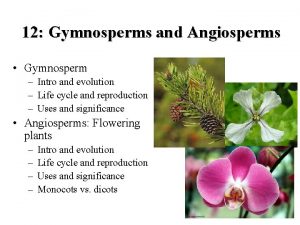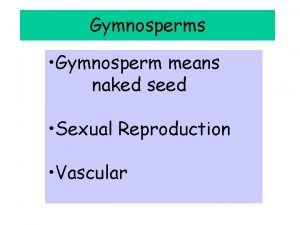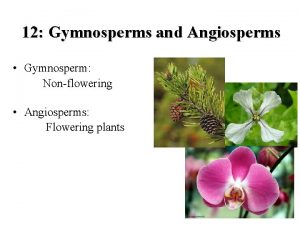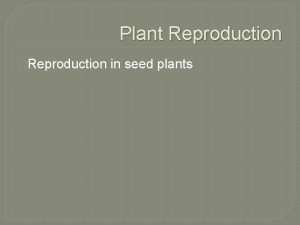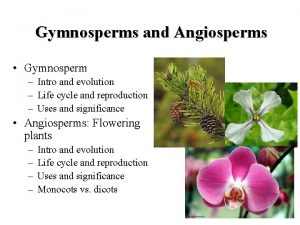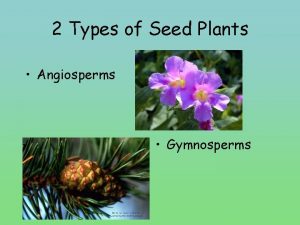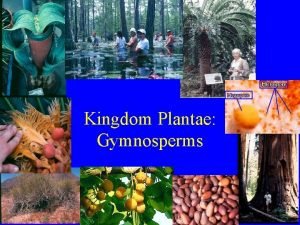Gymnosperms Jasmin Livingston What is a Gymnosperm Gymnosperm














- Slides: 14

Gymnosperms Jasmin Livingston

What is a Gymnosperm? Gymnosperm: Naked seed They are vascular plants that develop uncovered seeds They are one of two major groups of seed bearing plants and trees The other group are called Angiosperms They were around before the dinosaurs, and they include some of the oldest and largest trees alive today i. e. Bristlecone pines; Giant Redwoods The seeds lack a protective enclosure Flowering plants have flowers and fruit They have cones for means of reproduction instead of flowers There are four phyla:

Cycads Palm-like Predominant during the age of the dinosaurs Only a handful exists today Found in hot tropical areas Tropical & subtropical They have both female and male plants. females produce seeds in large cones males produce cones filled with pollen They can take up to 10 years to mature

Ginkgophytes (Living Fossils) They remained mostly unchanged Ginkgo fossils look almost similar to modern Ginkgoes. There is only one species that remains They are diecious plants Male trees have stalked pollen sacs that are clustered together at the base of leaves. Female trees have pairs of unprotected ovules at the end of long stalks attached to the base of leaves.

Gnetophytes Live in humid deserts, some in tropical rainforests There are 3 genera: Gnetum About 30 species Ephedra About 65 species Welwitschia Only one species They are diverse in form & size

Conifers Conifer: cone-bearing 575 species Conifers are the evergreen trees you will typically see up north Pine Fir Cedar Hemlock Spruce Cyperus These are the largest, most well-known gymnosperm They are most abundant in northern temperate and boreal regions

Life Cycle http: //studyjams. scholastic. com/studyj ams/jams/science/plants/gymnosper ms. htm

Difference between Male and Female cones Male (Microsporangiate strobilus) Female (Megasporangiate strobilus) Contain pollen Contain seed Smaller in size at maturity Bigger in size at maturity Exists in clusters at the tips of branches Scattered throughout the tree Do not last as long as their female counterparts Can take roughly 2 years for them to mature


Activity: Go Outside!

Male Cone Slide

Female Cone Slide


Evaluation 1. What are gymnosperms? 2. What is the largest group of gymnosperms? 3. What is the name of the only species of Ginkgoes? 4. What is the difference between a microspore and a megaspore?
 Contrast gymnosperms and angiosperms
Contrast gymnosperms and angiosperms Moss fern gymnosperm angiosperm
Moss fern gymnosperm angiosperm Why are gymnosperm seeds referred to as “naked seeds”?
Why are gymnosperm seeds referred to as “naked seeds”? Classification of gymnosperms ppt
Classification of gymnosperms ppt Gymnosperms do not produce flowers
Gymnosperms do not produce flowers Gymnosperms characteristics
Gymnosperms characteristics Monocots have __ cotyledon
Monocots have __ cotyledon Pterophyta dominant generation
Pterophyta dominant generation Albuminous cells of gymnosperms are equivalent to
Albuminous cells of gymnosperms are equivalent to Are angiosperms seedless vascular plants
Are angiosperms seedless vascular plants Ferns conifers and angiosperms
Ferns conifers and angiosperms Terrestrial plant
Terrestrial plant Contrast gymnosperms and angiosperms
Contrast gymnosperms and angiosperms Are gymnosperms vascular
Are gymnosperms vascular Jasmin fischbach
Jasmin fischbach

